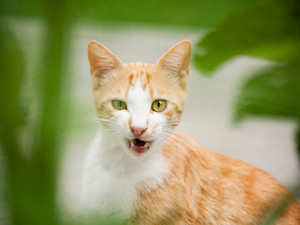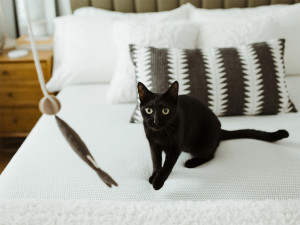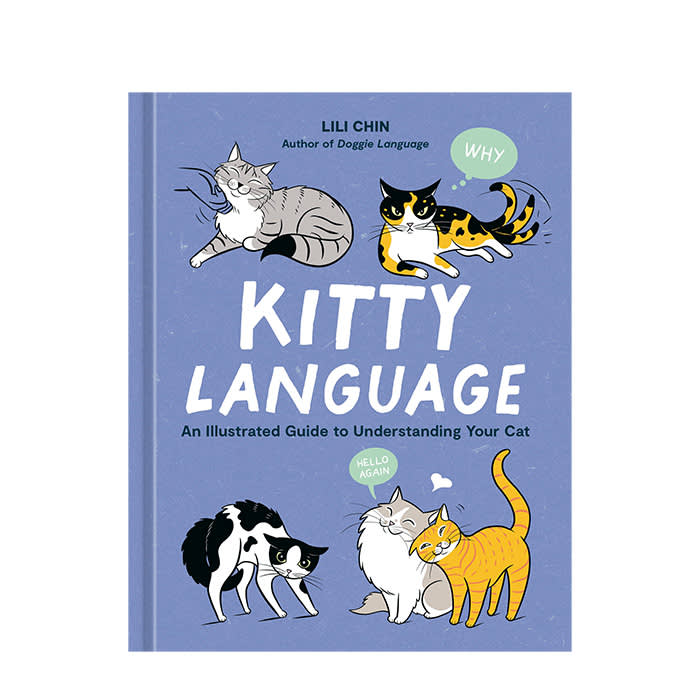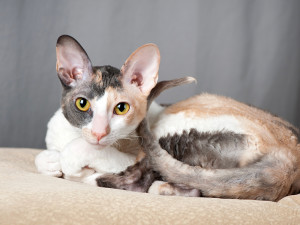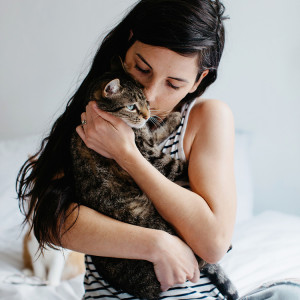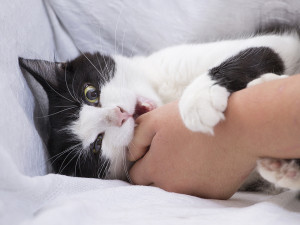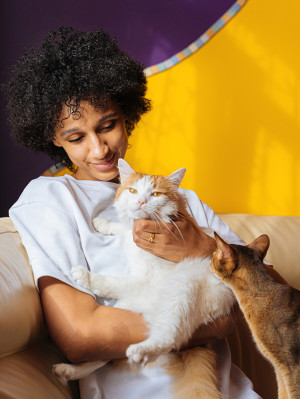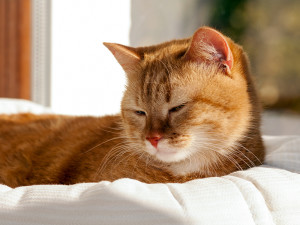In “Kitty Language,” Lili Chin Draws You a Literal Cheat Code to Your Cat
The author and artist uses informative (and freakin’ adorable) images to teach cat parents everything about kitty communication.
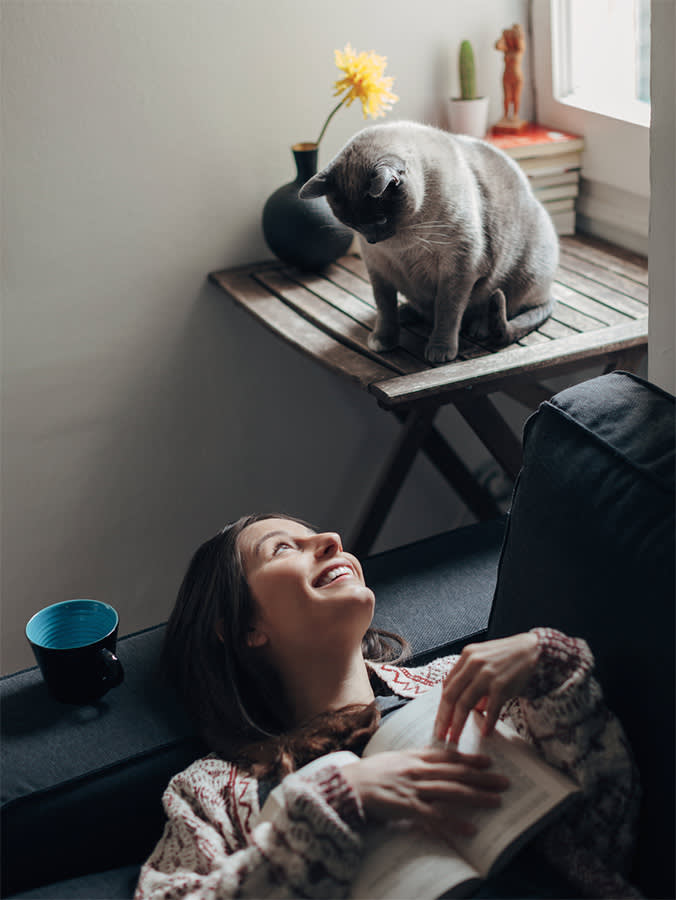
share article

Your pet wants you to read our newsletter. (Then give them a treat.)
Have you ever wondered if you could have a guide to understanding your cat? Like, when your cat plays with another cat, are they being friendly, or is this a rumble? Or why do they stare at you, seemingly unblinking, for several minutes? Maybe you’re a new cat parent, and you’re suddenly wondering: Why do they do anything they do, and what are they trying to tell me?
Kitty Language: An Illustrated Guide to Understanding Your Catopens in a new tabby Lili Chin is a long-anticipated book that professionals in every career related to cats and plenty of cat parents, too, will soon be poring over, discussing, enjoying, relishing, and recommending.
This book has what you need to understand your cat.
Rarely does a book improve our relationship with our cats (and, as a result, improve both their quality of life and our own), but Kitty Language does so, to the benefit of all people and their cats. As Chin writes at the start of Kitty Language, “Learning to recognize cat body language is about observing movements in context and understanding the connection between behavior and the bigger picture.”
Her point is so important because to really understand any animal, including cats, means learning about more than just what movements and positions of specific parts of the body indicate about emotion or behavior. Luckily for us, it’s clear she speaks the truth when she says, “I enjoy learning about different species’ behavior so it’s fun for me.”
In fact, Chin had to learn a lot about cats to write and illustrate this book, and she went all in: “In 2021, we adopted two cats. My dog, Boogie, died at the end of 2020, and I wasn’t ready to adopt a dog and replace Boogie. My husband is a cat guy, so we adopted a bonded pairopens in a new tab — Shimmy and Mambo. I also did a lot of research with books, videos, and experts.”
Chin tells The Wildest the research process for this book was not easy: “There are not a lot of resources on cat behavior compared to what’s available about dog behavior and body language, especially visual resources. There’s a lot of amazing written materials, but not a lot of pictures. I had to dig around a lot for pictures of cats. I searched for things like ‘stressed photos of cats’ but 90 percent of those were not stressed.”
Although sources were hard to come by, Chin figured out lots of ways to get what she needed. “A lot of the cats in the book are my friends’ cats, but because of the pandemic I didn’t meet them. People generously sent pictures and videos of their cats, and now they are in the book.” Many of the resources (beyond her friends’ cats!) that she found most helpful are in the resources section hereopens in a new tab.
And you get helpful visual aids.
As an artist’s approach to understanding cats (with a lot of input from scientists!), Kitty Language is primarily visual. We humans are a visual species, so pictures that visually represent cat behavior allow us to learn about cats more easily. The drawings are informative and so cute (I cannot emphasize enough how cute they are!) — truly the most wonderful combination of accurate and whimsical.
I absolutely adore that Chin focuses on the whole body, the context, and a deep understanding that every cat is an individual. Because I am an animal behaviorist, she is truly speaking my language here. There is no direct translation that can automatically declare exactly what everything a cat is doing or expressing means, but there are many clues that apply in most cases.
Throughout the book, the emphasis is on how the cat may be feeling, related to and based on visual signals and other forms of communication. That is true in the section about scentopens in a new tab, which is so key for cats and which I was delighted she included. After scent, the organization of the book is by body part, so that the movements and actions of ears, eyes, whiskers, tail etc., (and what they likely mean), is covered in detail, but always in the context of the whole body and the situation.
In addition to explaining and illustrating body language through the actions of various parts of the body, the book covers so much more that’s helpful for understanding our cats. There are drawings and text about posture that note signs of being extra relaxed with an open body, and details about the significance of both smoothness and confidence of movement.
You’ll become an expert at understanding cat play.
Anyone seeking to gain a better understanding of cats will be interested in their repertoire of vocalizationsopens in a new tab, signs of friendliness, and how to detect conflict or stressed behavior. Maybe most popular will be the section on play, which offers insights into distinguishing both play hunting behavior and social play from fightingopens in a new tab, as they are not so different that it’s easy to tell them apart in all cases. Chin enjoyed this section, too, noting that, “Drawing cats wrestling was fun. I have a thing for drawing animals wrestling!”
“I didn’t find any particular illustrations harder to do than any other,” Chin says. “They were all hard because it was hard to find visual reference material. I had less than a year, maybe six months, to do the book. I hope it opens discussions about cat behavior and the need for more resources.”
A talented artist, Chin is best known in the fields of animal training and animal welfare and is also the author of the award-winning and best-selling Dopens in a new taboggie Language: A Dog Lover’s Guide to Understanding Your Best Friendopens in a new tab. It takes highly skilled observational skills (and obviously patience) to share the essence of cats in all the glorious detail that’s hard to see at the full speed of real life.
I’ve been working with cats for decades, and I still learned from Lili Chin’s marvelous drawings and her ability to capture the big picture and all the little details that make up that big picture. If you want to better understand the feelings and behavior of your cat, Kitty Language is an essential book to have, read, and enjoy.

Karen B. London, PhD, CAAB, CPDT-KA
Karen B. London, Ph.D., is a Certified Applied Animal Behaviorist and Certified Professional Dog Trainer who specializes in working with dogs with serious behavioral issues, including aggression, and has also trained other animals including cats, birds, snakes, and insects. She writes the animal column for the Arizona Daily Sun and is an Adjunct Professor in the Department of Biological Sciences at Northern Arizona University. She is the author of six books about training and behavior, including her most recent, Treat Everyone Like a Dog: How a Dog Trainer’s World View Can Improve Your Lifeopens in a new tab.
Related articles
![White and light brown cat laying down with eyes almost closed]() opens in a new tab
opens in a new tabStudy Says “Slow Blinking” at Your Cat Helps You Bond
A team of psychologists at the Universities of Sussex and Portsmouth have discovered the key to building a bond with cats.
![Cornish Rex cat laying down on a pillow]() opens in a new tab
opens in a new tabThe Cat Breed-Behavior Connection
Which cats are more likely to have stranger danger? Bite the hand that feeds them? Do the zoomies? Scientists studied 5,700 pet cats and discovered some interesting traits.
![dark-haired woman hugging cat that has imprinted on her]() opens in a new tab
opens in a new tab10 Signs Your Cat Has Imprinted on You
Feeling like you have a little shadow these days? Here’s why that’s happening.
![cat biting person's hand]() opens in a new tab
opens in a new tabWhy Does My Cat Bite Me?
Don’t live in fear of your feline overlord.
![A woman with curly black hair sitting in front of a dark purple and yellow backdrop while looking down affectionately at her two cats sitting on her lap]() opens in a new tab
opens in a new tab7 Ways to Build Your New Cat’s Trust in You
If your cat still approaches you with a figurative arched eyebrow of skepticism, try these tricks to put them at ease.
![Red cat with squinted eyes laying in a basket closeup]() opens in a new tab
opens in a new tab6 Ways Your Cat Could Tell You They Are in Pain
Here are all the way your kitty is trying to tell you they’re hurting.

